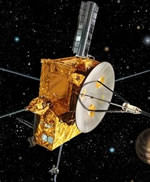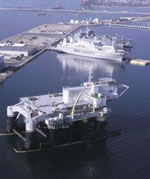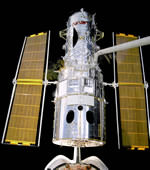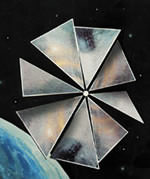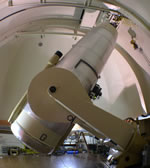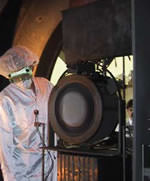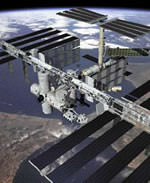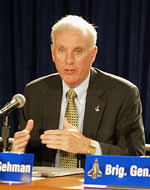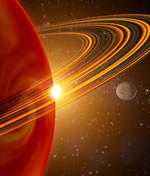
Image credit: NASA
A team of astronomers from Ohio State University believe that we should be seeking life on a wider range of planets than previously speculated. They calculated that NASA’s upcoming Space Interferometry Mission (SIM) should be able to detect habitable planets near stars which are much larger than the Sun. This opens up a whole new range of planets to look at. SIM was originally supposed to launch in 2009, but NASA is considering whether to use these funds to maintain Hubble past 2010 instead.
The search for life on other planets could soon extend to solar systems that are very different from our own, according to a new study by an Ohio State University astronomer and his colleagues.
In fact, finding a terrestrial planet in such a solar system would offer unique scientific opportunities to test evolution, said Andrew Gould, professor of astronomy here.
In a recent issue of Astrophysical Journal Letters, he and his coauthors calculated that NASA?s upcoming Space Interferometry Mission (SIM) would be able to detect habitable planets near stars significantly more massive than the sun.
Scientists have typically thought that the search for life should focus on finding planets like Earth that orbit stars like the sun, but this new finding shows that ?the field is wide open,? Gould said.
?Here?s a type of solar system that we never thought to look at,? he added, ?but now we?ll have the tools to do it.?
Gould is on the science team that is helping to plan the SIM mission, and he is working to define the capabilities of the satellite.
The satellite was set to launch in 2009, but its fate is now uncertain. NASA is considering whether to divert funds to maintain the Hubble Space Telescope beyond its scheduled retirement in 2010, Gould explained, and he has been asked to address the issue for an assembly of astronomers in Washington D.C. on Thursday, July 31.
SIM would help astronomers find habitable planets, Gould said. The key is detecting planets that circle a star at just the right distance to maintain a supply of liquid water. The range of most promising orbits depends on the type of the star, and is called the ?habitable zone.?
The earth resides directly in the habitable zone for our solar system, some 93 million miles from the sun. The nearest planets, Venus and Mars, barely lie within the edges of the habitable zone.
Hotter, more massive stars have always been considered less likely to harbor life, though not because they would be too hot. Planets could still enjoy temperate climates, just at orbits farther away from the star.
The problem is one of time, not temperature, Gould said.
Hotter stars tend to ?burn out? faster — perhaps too fast for life to develop there.
Our sun is approximately 4.5 billion years old; in contrast, one of the stars examined in the study is 1.5 times more massive than the sun, and would probably only generate life-sustaining energy for about two billion years.
Given the billions of years required for evolution of life on earth, scientists could question whether life would stand a chance in a shorter-lived solar system.
?We have no idea how evolution would proceed on any planet other than our own,? Gould said. ?If we find a planet around a shorter-lived star, we may be able to test what would happen to evolution under those circumstances.?
SIM will use Interferometry — a technique that involves the interference of light waves — to very accurately measure the position of stars in the sky. The satellite would notice, for instance, if a point of light on the surface of the moon moved the width of a dime.
In the case of distant stars, SIM will pick up on the tiny wobble in the position of a star caused by the gravity of its orbiting planets.
That?s what will make SIM ideal for studying hotter, massive stars, Gould said. Planets that orbit far from a star — as the habitable planets around a hot star would have to do — create a larger wobble.
He and study coauthors Eric B. Ford of Princeton University and Debra A. Fischer of the University of California, Berkeley, determined that SIM is sensitive enough for the task.
Previously, Gould and Ohio State professor Darren DePoy and graduate student Joshua Pepper determined that another future NASA mission could be used to find habitable planets around very small stars, which are much more plentiful in the galaxy than stars like our sun.
That mission, the Kepler Mission, will detect planetary transits — events where planets pass in front of a star and block the star?s light from reaching earth. Transits of planets orbiting close to a star are easier to detect, and because these small stars are very dim, the habitable zone would also be very close to the star.
?The point is that the various methods for planet detection complement each other, and can be used to find habitable planets around a wide variety of stars,? Gould said.
NASA funded this research.
Original Source: OSU News Release

